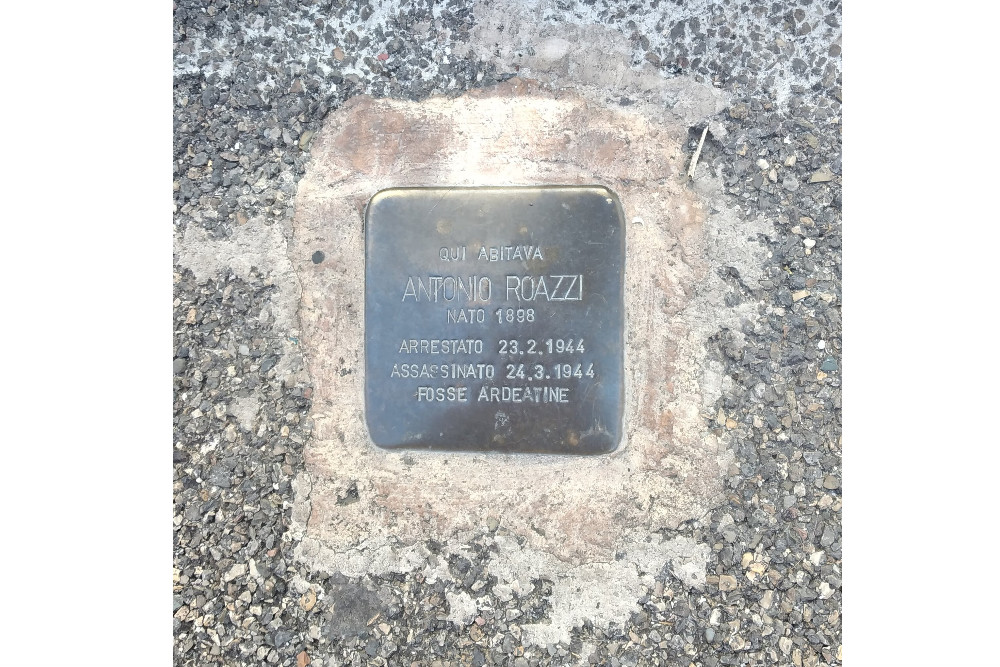Stumbling Stone Via Grazioso Benincasa 28
This small brass memorial plaque (Stolperstein, pietra d'inciampo, or stumbling stone) commemorates:
* Antonio Roazzi, born 1898, arrested 23.2.1944, murdered 24.3.1944, Fosse Ardeatine.
Background
Fascist Italy surrendered to the Allies on 8 September 1943. Then the Germans quickly invaded Italy, arriving in Rome on 11 September.
Antonio Roazzi joined the Communist Movement of Italy and the resistance. His role included transporting allied prisoners from nearby Frosinone Province to Rome, where he worked with a program for hiding allied prisoners. His house at Via Grazioso Benincasa 28 became a place to hide British and American soldiers as well as weapons and posters. He may have been one of the resistance group which put up anti-fascist, anti-Nazi posters in the neighborhood on 23 February 1944. On the same day, the SS raided Roazzi’s house and arrested him. In spite of torture, he did not reveal the names of his co-conspirators.
On 23 March, the Italian resistance set off several explosions that killed 42 Nazi Order Policemen. The Nazi reprisal was swift: 335 Italian boys and men were executed in groups of five the next day in the Fosse Ardeatine [Ardeatine Caves]. Antonio Roazzi was one of them: he was taken from the Via Tasso prison to the Fosse Ardeatine and shot in the back of the head on 24 March 1944.
"Stolpersteine" is an art project for Europe by Gunter Demnig to commemorate victims of National Socialism (Nazism). Stolpersteine (stumbling stones) are small, 10x10cm brass plaques placed in the pavement in front of the last voluntary residence of (mostly Jewish) victims who were murdered by the Nazis. Each plaque is engraved victim’s with the name, year of birth, and place (mostly a concentration camp) and date of death. By doing this, Gunter Demnig gives an individual memorial to each victim. One stone, one name, one person. He cites the Talmud: "A human being is forgotten only when his or her name is forgotten."
Do you have more information about this location? Inform us!
Source
Nearby
Museum
- Museum Granatieri Di Sardegna - Rome
- Mussolini's Villa Torlonia - Roma
- Napoleonic Museum of Rome - Roma
Point of interest
Monument
- Memorial Italian Infantry - Roma
- Monument Granatieri Di Sardegna - Rome
- Memorial Partito d’Azione - Roma
Cemetery
- Italian War Grave Cimitero Comunale Monumentale Campo Verano - Rome
- Commonwealth War Grave Verano Communal Cemetery - Roma
- Tomb of the Unknown Soldier - Roma





